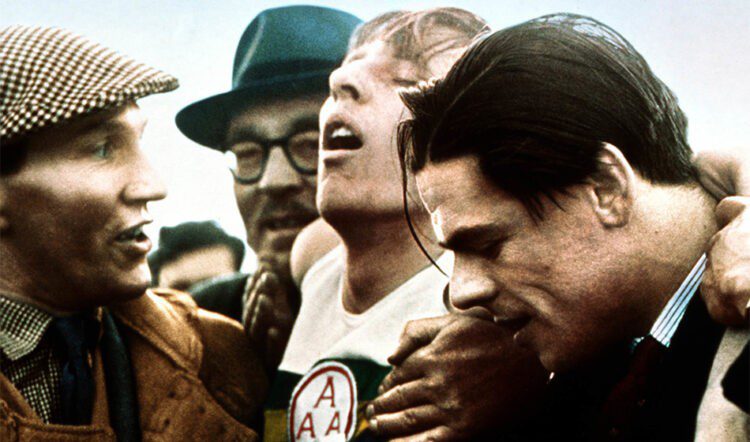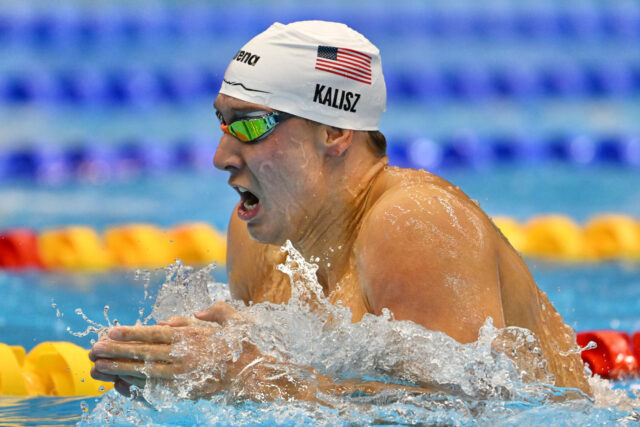
Oxford is the place to be next Monday when the 70th anniversary of Roger Bannister’s iconic 3:59.4 is celebrated
Monday May 6 marks one of the most important anniversaries in the sport. It will be 70 years since Roger Bannister became the first man to break the four-minute barrier for the mile. Keen to mark the occasion, Oxford University is staging a day-long celebration with a community mile in the centre of the city and track races at the same Iffley Road venue where Bannister created history in 1954.
I hear the organisers are pulling out all the stops to attract the supermilers from around the world to attend. Given this, I’ve had it marked in my diary for months as one of the unmissable events of 2024.
Following the community mile in the morning, the afternoon series of races will feature competitions for young athletes, masters and para-athletes, there is a novel ‘steeplechase mile’ which is guaranteed to produce records, whereas the meeting culminates with elite mile races which are due to start at 6pm – exactly the same time Bannister began his race 70 years earlier.
World Athletics is supporting the meeting by showcasing some priceless historical items in a pop-up museum. The global governing body will also present two of its Heritage Plaques to mark the importance of the venue and occasion before a number of guests go to a formal dinner at Exeter College to wrap up the day. Certainly, if you were not lucky (and old) enough to be standing at Iffley Road in 1954 with a duffel coat and cigar, the anniversary event on Monday is the next best thing.
It promises to be as good as the 50th anniversary event at Iffley Road in 2004. Back then, Craig Mottram of Australia and Sonia O’Sullivan of Ireland won the elite mile races in 3:56.64 and 4:27.79 respectively with Bannister, who sadly died in 2018, on hand to watch the action.

Roger Bannister and Craig Mottram (Mark Shearman)
On May 6, 2004, we brought out a special “sub-four special” issue of AW to mark the 50th anniversary where, among other things, we ran a feature on our predicted ‘supermiler of the future’, a certain Farah, seven years before he won his first global track title, albeit at 5000m.
The issue also contained one of AW’s final big interviews with Bannister. After hearing he didn’t suffer fools, I arrived at his flat in Kensington, west London, with a degree of trepidation but he could not have been friendlier or more welcoming during a 90-minute interview. The archetypal English gentleman (and much taller than I imagined) he lived up to all my expectations and more.
When it came to the idea of a sub-two-hour marathon – a feat many regarded 20 years ago as “impossible” – Bannister’s view was “of course, why not?” Another mild surprise was that Bannister treated his work in neurology and sports politics as every bit as important and satisfying as his athletics achievements.
Even when I tackled him about Ken Wood, the enigmatic 1950s miler who outrageously claimed he ran a sub-four-minute mile in a ‘training race’ in April 1954, the great man kept his cool and gave a diplomatic answer. “Running a mile in an unofficial time trial,” he smiled, “and doing it in a race with official timekeepers are two quite different things.”

There is talk of turning this Bannister Miles meeting into an annual event. If so, it would help keep the tradition of racing over the mile alive.
It was great to see the mile included in the inaugural World Road Running Championships in Riga last October. The adizero Road to Records also included a mile last weekend. Of course the much anticipated clash between Josh Kerr and Jakob Ingebrigtsen is due to take place in the Bowerman Mile at the Pre Classic in a few weeks too.
Generally, though, the mile has been a declining event due partly to the need for athletes to chase 1500m times instead to qualify for major championships. Steve Cram’s British record for the mile of 3:46.32, for example, has stood since 1985, whereas Hicham El Guerrouj’s world mile record of 3:43.13 has survived since 1999 although, to be fair, his 1500m record of 3:26.00 was set in 1998.
One can only imagine how fast El Guerrouj and Cram would have run with super shoes and wavelight pacing. Or Bannister for that matter. “If he had been competing now,” El Guerrouj once told AW, “with technology and the tracks we have, he would have been unbelievable.”

Hicham El Guerrouj signs the Emsley Carr Mile book
It is often said that the most glamorous events in athletics are the 100m, mile and the marathon. Yet the mile is often overlooked by meeting organisers.
Not this coming Monday, though. For once the mile will enjoy centre stage as some of the best middle-distance runners of the moment try to follow in Bannister’s famous footsteps.
Look out for the AW archive
The latest issue of AW’s monthly magazine is out this week and features a generous helping of mile-related material. This includes an extract from Roger Bannister’s autobiography together with an interview with the remarkable David Picksley, the former linguist from Croydon who was the oldest finisher in this year’s London Marathon aged 91 and was among the crowd on May 6, 1954, as an Oxford student.
Avid readers of AW will be interested to hear that you will soon be able to access our older issues online too. We are poised to make all of our magazines dating back to 1945 available in a digital archive. This means you will be able to dig out, among other things, our original coverage of the sub-four-minute mile.
If you can’t wait for this online Aladdin’s Cave of AW issues, then you can read our original report of the first sub-four-minute mile here. Then brace yourself for almost 4000 issues hitting the internet.
To borrow a quote from Bannister: “Après moi, le deluge.”

Jim Denison, author of books on Gebreselassie and Bannister, dies
Jim Denison, the former AW writer and author of Haile Gebrselassie’s autobiography, has died aged just 60.
At the turn of the millennium Denison edited AW’s sister publication The Coach before heading to Canada to work as Professor of Coaching Studies in Kinesiology, Sport, and Recreation at the University of Alberta.
A few years earlier, during his student days in New York, he ran 3:43:50 for 1500m and in addition to later collaborating with Gebrselassie, he wrote Bannister and Beyond: The mystique of the four-minute mile.
It seems fitting this week, therefore, to repeat the opening words from that book as it not only illustrates his fine writing ability but encapsulates the meaning of the mile.
“The four-minute mile: four laps in four minutes: simple, neat, balanced, clean. A sweep of the track in synch with a sweep of the watch, the four-minute mile is an athletic standard known the world over.
“Even in today’s metric age the challenge of a four-minute mile continues to inspire young runners and excite sports fans everywhere. Indeed, a mile run in less than four minutes is a true test of an athlete’s physical and mental capabilities.
READ MORE: recent AW blogs
“Unlike the burst of speed needed to cover the dashes, or the methodical sense of pacing required to endure the marathon, success as a miler enlists a sublime combination of speed and stamina, tactics and courage, and patience and spontaneity. The mile’s four-lap, four-beat rhythm also ideally suits the human attention span; it’s a seductive four-act drama with a clear beginning, middle and end.”
» Subscribe to AW magazine here
Sub-four fever as the ultimate milestone approaches appeared first on AW.



















You must be logged in to post a comment Login